The Origin of the Temple
The specialty of this temple is that there is no specific day or particular time that is considered auspicious. It is good to visit the temple at any time or day as per your convenience. However, it is good to note that on weekends and other public holidays the temple can be crowded. Keep this in mind while planning your trip.
Certain festivals are celebrated like Navarathri, during Margazhimaasam and Karthigai maasam. These times can be considered extra special and there will be extra crowds at the temple.
History of Garbarakshambigai Temple
On the banks of the beautiful Vagai river, there stands an ancient temple. For over 1000 years people from across South India have visited this temple to seek the blessings of the foremost Goddess of fertility – Garbarakshambigai Amman and Her consort Lord Mulaivananathar. Imagine the scene a thousand years ago. In the midst of a dense forest and the banks of the Vagai river stood the ancient temple of Garbarakshambigai Amman. The temple started as a Mullai Vanam or a jasmine garden where a Swayambu lingam manifested.
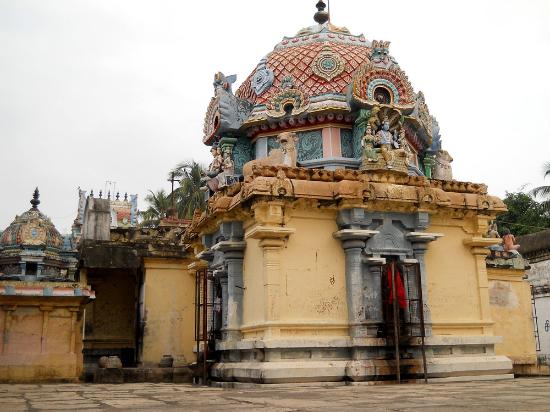
This temple is one of the five Pancha Aranya Sthalams. These represent the five forests where temples are located. The five temples are
- Mullaivanathar temple at Thirukarukavur,
- Satchi Nathar Temple at Avalivanallur,
- Paadhiri vanam. Paathaleswarar Temple at Thiru Aradaipperumpazhi (Haridwara Mangalam), Vanni vanam
- Aapathsahayeswarar Temple at Thiru Erumpoolai (Alangudi) – Poolai vanam and Vilvavaneswarar Temple
- Vilvavaneswarar Temple at Thirukollam Pudhur – Vilva vanam
Anyone visiting this temple feels a sense of peace and serenity. It is a large temple measuring 460 ft by 284 ft. Like the Lord Dakshinamurthy who faces South, this temple too has a southern entrance. The Rajagopuram is majestic and towers over the peaceful Papanasam village with its 5 intricately carved towers.
Like all temples in South India, this temple too has several prakarams or precincts. There is the famous Mullai Vanam (this is the garden from which the temple derives its name) or the jasmine garden in the southern side of the temple. There is a Vasantha mandapam on the Northern side. The shrines of Amman and Lord Shiva are located in the second prakaram.
Water bodies add serenity to any place. This temple has not one but 4 water bodies. The main temple tank is the Sheerakundam or the temple tank that was created by the wish-fulfilling cow Kamadhenu and filled with its milk. The other tank Sathyakupam is located in between the shrine of Garbarakshambigai Amman and the shrine of Lord Mulaivananathar. There is a tank called Brahma Theertham and another called Karthigai Thivatharai where Lord Nataraja gives theertham in the month of Karthigai.

The temple finds mention in Tevaram, the 7th century 12 volume Saiva canonical work by Tamil saints, namely Appar, Sundarar and Campantar. It is one of the shrines of the 275 Paadal Petra Sthalams glorified in the Saiva canon.[11] The temple also finds mention in Periya Puranam by Sezhkizhar, Siva Ksehtra Sivanamaga Kalivenba by Umapathi Sivam and Vinnapakali Venba by Ramalinga Adigal.[11] Thalapuranam by Ambalavana Pandaram, Nanmaimalai & Rettaimanimalai by Veerabathra Swamigal, Pathirru Panthathi by Govindaswami Pillai, Vadamozhi Slogangal by Anatharama Dikshithar and Amman thothirangal Tamilpattu by T.S. Vaithiyanathan are some of the religious works associated with the temple.[11]
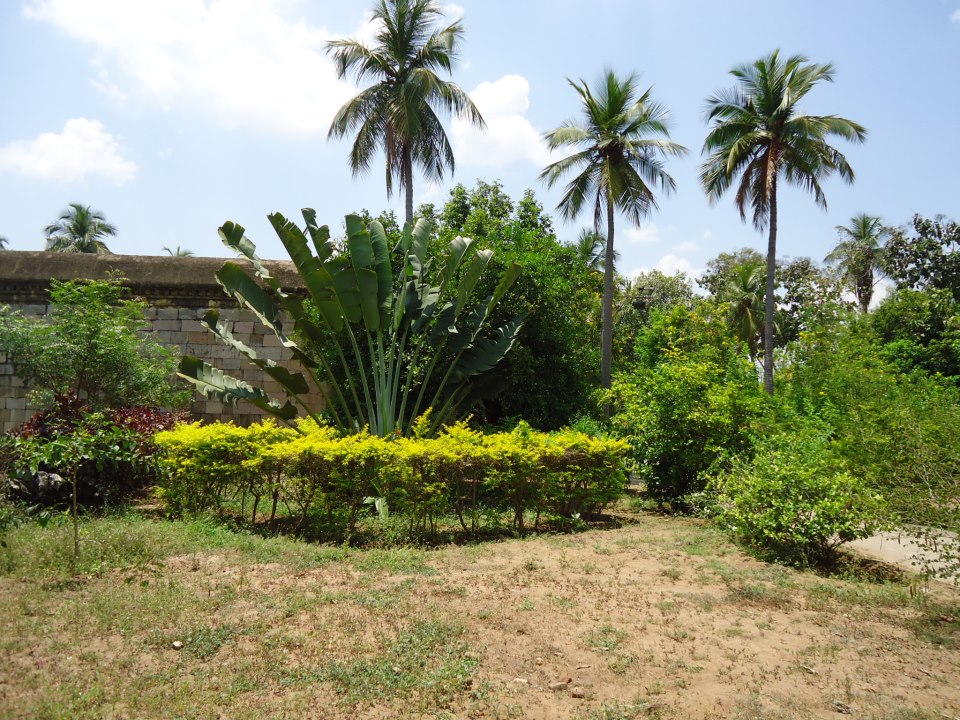
Temple Architecture
The Shri Garbharakshambika Sameta Shri Mullaivana Nathar temple encompasses a vast area, adorned with magnificent towering Gopurams and a picturesque water tank in front.
As you approach the temple, you will be greeted by a grand Raja Gopuram on the eastern side, while an entrance on the southern side also invites visitors. Tall and graceful coconut palm trees surround the temple, adding to the serene and sacred atmosphere that permeates the entire area.
Upon crossing the temple tank, you will enter the complex of Shri Garbharakshambika Sameta Shri Mullaivana Nathar. Both the shrines of Lord Mullaivana Nathar and Goddess Garbharakshambika are located in the outer prakaram, the primary area facing the east.
The main sanctum of the temple houses the divine Shiva Lingam, with the enchanting Goddess Garbharakshambika situated to the left of Lord Shiva’s shrine.
Within the temple, you will also find a shrine dedicated to Lord Subramanian, further enriching the spiritual experience for devotees.
Traditionally, devotees first pay their respects at the shrine of Lord Mulaivananathar before proceeding to the shrine of Devi Garbarakshambigai. The temple holds special significance as it is believed that the Nandi (the sacred bull) and the Karpaga Vinayagar (Ganesha) inside the temple are Swayambhu vigrahams, self-manifested forms, evoking deep devotion from worshippers.
Visiting both the shrines of Lord Mulaivananathar and Devi Garbarakshambigai allows devotees to seek blessings and experience the divine presence of these revered deities.
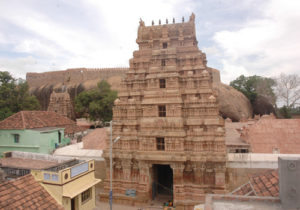
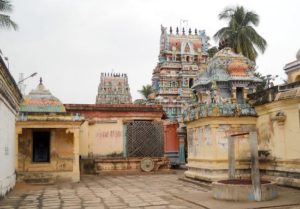
Garbarakshambigai Temple History:
The majestic Gopuram (temple tower) and the imposing compound walls of the Garbaratchambigai Temple narrate a tale spanning over a thousand years.
Preserved in manuscript form, the Sthalapuranas (sacred texts describing the history of the place) in Sanskrit and Tamil testify to the ancient origins of the temple. These manuscripts provide a detailed account of the Kshetram’s (holy place) inception and the divine blessings bestowed upon various individuals who sought solace here. Additionally, ancient inscriptions adorn the temple walls, some dating back to the reign of King Raja Raja Chola (985-1014 AD) and Parantaka Chola (early 10th century AD), offering glimpses into the temple’s historical significance.
Evidence suggests that prominent figures such as Beema, Garkiyar, Gouthamar, and numerous ancient kings worshipped at this temple, leaving behind a legacy of devotion and reverence.
The illustrious Nayanmars, namely Appar, Sundarar, and Sambandar, renowned saints and poets, have extolled the glory of God and this temple through their enchanting verses (pathigams). Despite the challenges they faced while traversing the lengths and breadths of Tamil Nadu in search of these temples, the three Nayanmars and their followers visited this sacred site, guided by the divine intervention of Lord Shiva himself. Their compositions in classical Tamil, known as Pathigaams, hold immense value in the realm of Tamil literature.
What are the festivals celebrated at Garbaratchambigai Temple?
Vaikasi Brahmotsavams: Vaikasi Brahmotsavam is celebrated with great pomp and show at the temple. Several hundred people participate in the processions that are taken out during this festival.
Navratri: During the Purattasi month the 10-day Navarathri festival commences and is celebrated.
Margazhi utsavam: Margazhi festival is celebrated at all temples in Tamil Nadu and India. Mainly the celebrations of this festival take place in all Vishnu temples and Shiva temples. Another importance of margazhi is that devotees read Tamil Holy Scriptures “Thiruppavai” and “Thiruvempavai” during this month.
Thiru Kalyanam: The traditional wedding ceremony of Garbarakshambigai Amman to Lord Shiva.
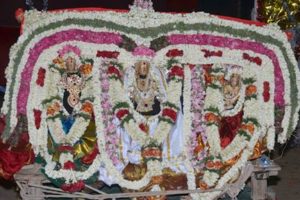
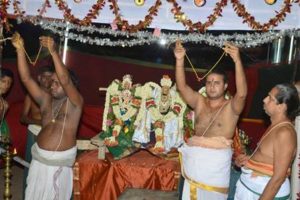
Thirukkarthigai: Tamil Nadu celebrates Karthigai Deepam as the traditional festival. This festival of lights involves lighting lights almost anywhere to put an end to darkness. People